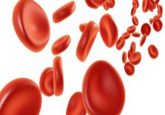ESMO WCGI: Molecular changes along the upper digestive tract discovered

Researchers have identified variations in gene mutations in tissues biopsied from various sections of the digestive tract. The findings may aid the development of more personalized therapeutic strategies for gastrointestinal cancer patients.
In this study, researchers from Georgetown Lombardi Comprehensive Cancer Center (WA, USA) analyzed over 4000 tumor samples from a tissue repository of patients with gastrointestinal tract cancers. By utilizing sequencing techniques the researchers were able to determine how efficiently genes were expressed. The findings were presented recently at European Society for Medical Oncology gastrointestinal meeting (Barcelona, Spain, 28 June – 1 July, 2017).
Principal investigator Mohamed E Salem from Georgetown Lombardi Comprehensive Cancer Center commented: “Our study was undertaken primarily because small bowel adenocarcinomas (SBAs) are greatly understudied, as well as increasing in incidence nationwide, and we wanted to determine what may make them unique. We really didn’t have good data on SBAs so we’ve been treating the tumors as if they were colon cancers and we really need to start treating them based on their unique properties.”
The team calculated the tumor mutation load and observed a two-fold higher expression of PD-L1 in gastrointestinal cancers compared to right-side colon cancers. The team did not observe such a marked difference when they compared those tumors and SBA’s.
The team also observed that mutations for SBA’s were more similar to colon cancers than gastric cancers. Salem commented: “With this study we now have what I think is one of the biggest datasets on SBAs. Previously, investigators studying the colon found very unique differences between the left and ride sides, and our study therefore took advantage of those findings by exploring the differences between ride-sided colon cancers and SBAs. We now see a continuum of molecular changes that occur as these regions of the digestive tract transition from one area to the other.”
Going forward the team hope to correlate these findings with patient treatment outcomes, with the ultimate goal of a clinical trial to determine which treatments work best for patients with SBA’s.
Sources: Eureka alert press release




